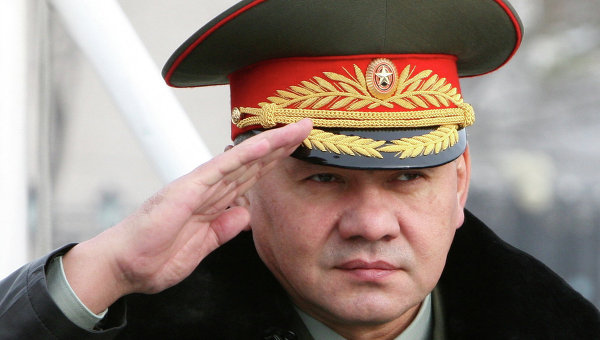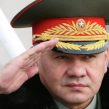
Shoigu Opts for Mystical Defense Plans (Part Two)
Publication: Eurasia Daily Monitor Volume: 10 Issue: 198
By:

Russia’s defense minister, Army-General Sergei Shoigu, has served in office for one year and has scaled back or halted some of the reform initiatives of his predecessor, Anatoly Serdyukov. Yet, an underestimated aspect to Shoigu’s leadership relates to an increased level of secrecy around defense expenditure, diminishing any hope to improve accountability in this area or in implementing steps in a number of other key areas that placed the skids on the “New Look” reforms of the Serdyukov era (see Part One in EDM, October, 29). Shoigu’s “aims,” such as increasing the tempo of combat training, improving housing, recruiting more contract personal and generally raising the levels of combat readiness, are open to question based upon the small scraps of insight behind the curtain of secrecy thrown out to Duma Defense Committee members.
One conceivable reason underlying Russia’s new lurch into defense expenditure secrecy could stem from the dispute between the Ministry of Defense and the Ministry of Finance; throwing a cloak over the actual figures may defuse inter-ministerial tensions. However, although the finance ministry has attacked several aspects of defense spending, the logic of their arguments ran aground on the crucial issue of the size of the Russian military (see EDM, January 18, 2011).
Despite that level being fixed at “one million” by a presidential decree, it was already apparent before the change of leadership in the defense ministry that the figure is fictional. Today, around 220,000 officers and 186,000 contract personnel serve in the Armed Forces, with conscripts sent into the units twice each year in spring and fall amounting to no more than 350,000. There are approximately 60,000 students and cadets in military educational establishments and 50,000 “on orders” in a hiatus between service and discharge to the reserve due to lack of housing. The best estimate made by Nezavisimoye Voyennoye Obozreniye is that the total under arms is around 860,000 to 870,000 (see EDM, February 12, 2013). That leaves around 130,000 “dead souls”—an allusion to Nikolai Gogol’s fictional work in 1842, which drew upon the appearance of dead serfs in the property registers. And it is on this mysterious total figure that calculations are made regarding the distribution of monetary allowances, purchases of food, military equipment and weapons, and expenditure on other materials such as missiles or ammunition.
While Soviet-style secrecy on defense expenditure has markedly increased under Shoigu’s defense ministry leadership, it still begs the question: what about rearmament? In July of this year, the commander-in-chief, President Vladimir Putin, held a conference on the rearmament of the Ground Forces and the Airborne Forces to 2020 in Sochi. Putin referred to the total cost of the Defense Ministry State Armament Program through 2020 as 4 trillion rubles ($123 billion) higher than the official 20.7 trillion rubles ($637 billion). An article in Vedomosti assessing the overall figures concluded that 4 trillion rubles in the plans to 2020 are effectively secret. Andrey Frolov, an expert from the Moscow-based Center for Analysis of Strategies and Technologies (CAST), speculated that the expenditure might relate to confidential programs connected to additional infrastructure modernization for training grounds, airfields, missile silos, etc. (Vedomosti July 15).
According to Russia’s logistics chief, Colonel-General Vladimir Bulgakov, a number of changes occurred in the combat service support structures, or Materiel-Technical Support (materialno-tekhnicheskogeo obespechniea—MTO). Officer categories were restored for platoon commander posts; and warrant officer categories were re-introduced for mess hall chiefs, depot chiefs, company senior technicians, fuel service technicians and other specialties. Specialized educational facilities, scientific research organizations, training subunits, and St. Petersburg Cadet Corps were returned to the MTO system. The Military Technical University, previously part of Spetstroy Rossii (Russia’s Federal Agency for Special Construction), was included in the MTO system. However, in late 2012, Shoigu decided to end the use of outside organizations in the MTO, and these now only perform tasks in peacetime or during military exercises. In other words, after Serdyukov doing much to experiment with the outsourcing of catering and other non-combat roles to civilian agencies, during combat operations, these functions will revert to military personnel only (Krasnaya Zvezda, May 9).
After one year in office, Shoigu has increased the confidence of the officer corps that he listens to them more than his predecessor did. The current defense minister has sought to convince them of his respect for men in uniform. However, he has also enhanced the level of secrecy on defense spending plans, perhaps to protect the interests of his ministry and prevent further conflict with the Ministry of Finance. But fundamental questions remain unanswered, such as what is the total size of the Russian military to be modernized in rearmament plans to 2020? And what type of Army is envisaged in this process? (https://www.ng.ru/armies/2013-10-10/1_army.html).
Shoigu has also laid great emphasis upon re-introducing Soviet style “snap inspections,” despite this long being abandoned by the North Atlantic Treaty Organization (NATO). He has offered no explanation on what these inspections actually achieve. NATO officers told Jamestown that such snap inspections offer a very two-dimensional and limited insight into combat readiness levels. Moreover, resorting to such inspections demonstrates that the reforms in 2008–2012 failed to introduce a culture of constant assessment on the part of commanders into the Russian Armed Forces; they should know their men without holding Cold War–era snap inspections (Author’s interview, October 2013). Many Western commentators have been misled by this apparently “new” development in Moscow’s approach to assessing its Armed Forces. Despite these serious flaws, Shoigu appears to have under-estimated the costs involved in pressing for more flash-to-bang: moving “large” formations, holding more military exercises and boosting combat training in this way demands greater levels of fuel, food and ammunition. Duma defense committee members are openly questioning if this can be sustained in the longer term (https://www.ng.ru/armies/2013-10-10/1_army.html).
Restricted use of civilian outsourcing for the MTO signals another important step away from Serdyukov’s “New Look.” While the style of leadership has changed at the top, the substance has remained rooted in muddling through. Instead of aiming to deal with endemic corruption and enacting real reform, Shoigu favors voodoo defense economics with its greater obsessive secrecy and lowered accountability. Moreover, he inflates personnel numbers perhaps for these very reasons (Nezavisimoye Voyennoye Obozreniye, October 18). One year on, the uncertain future facing the Russian military signals something different from the “New Look.” An illustration proves the point: according to the conclusion of the Duma Defense Committee, young men recruited annually as contract personnel will have no guarantee of adequate housing. That killed the last drive toward a semi-professional military. It seems old problems in Russia die hard.




